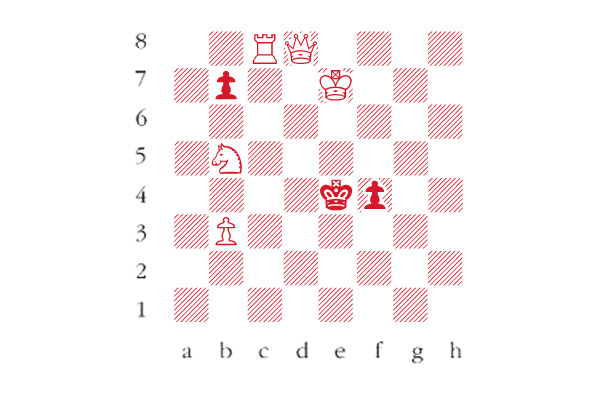The Bride and the Bachelors is an impressive exhibition of the work of Marcel Duchamp, John Cage and related artists which is on at London’s Barbican Centre until 9 June. Cage learnt chess in order to communicate with Duchamp without asking crass questions. Other artists, notably Max Ernst, Picabia, Calder and Man Ray also took up chess, impressed by Duchamp’s abilities. Duchamp was a master player at chess whereas the others were mere dabblers in comparison.
Marcel Duchamp was arguably the most influential artist of the 20th century, more so than Dalí, Picasso or Matisse. In 1923 he began to concentrate on chess rather than art and he came close to achieving master status. He competed in the French Championships and also in the Olympiads from 1928-1933.
In 1925 he had his chance to become France’s chess champion. He started well in the tournament, but blundered in a winning position against the eventual victor Robert Crepeaux, and then, doubtless discouraged, lost to Casier. Duchamp ended up in sixth place.
Twenty years later he returned to art when he began to work on ‘Etant donnés’. Its appearance surprised most of the art world, who believed he’d completely given up art for chess.
His enduring masterpiece ‘Fountain’, an upside-down urinal signed ‘R.Mutt’, was notoriously rejected by the American Sociey of Independent Artists in 1917, but declared the most influential work of the 20th century by a Turner Prize committee in 2004. When it was displayed at the Pompidou in 2006, a performance artist attacked the work with a hammer, chipping it. He claimed Duchamp would have approved of this addition to his work.
For John Cage’s birthday at the Chelsea Arts Club in 1990, attended by Marcel’s widow Teeny, Barry Martin, the vice-president and doyen of the club chess circle, arranged for the birthday cake to be a lifesize replica of ‘Fountain’.
Duchamp and Man Ray played chess against each other many times. An intriguing item is the record of a game played between Duchamp (White) and Man Ray (Black), identified as a joint work and written in English descriptive notation (‘Chess Record’, April 1921). The item maddeningly only shows White’s moves, not Black’s. From the starting position White checkmates in 50 moves, and my guess is that each player wrote down his own moves, but on separate sheets of paper. Only by finding Man Ray’s score sheet will we ever know for certain how the complete game went. This week’s game is my attempt at a reconstruction. The position is not designed as a contest of comparative strength but as an artistic co-production. Hence, the missing of mate in 1 en route is irrelevant.
Duchamp-Man Ray, 1921
1 Nc3+ Ke3 2 Rc4 f3 3 Qd1 3 Qd4 is immediate mate. 3 … f2 4 Qe2 checkmate





Comments